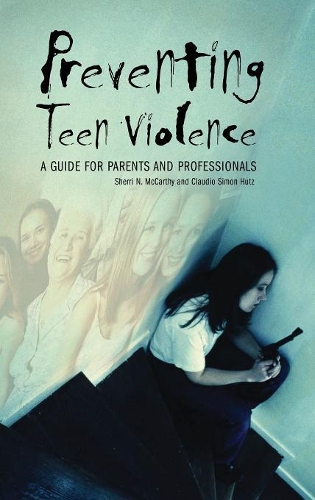
Preventing Teen Violence: A Guide for Parents and Professionals
(Hardback)
Publishing Details
Preventing Teen Violence: A Guide for Parents and Professionals
By (Author) Sherri McCarthy
By (author) Claudio S. Hutz
Bloomsbury Publishing PLC
Praeger Publishers Inc
30th January 2006
United States
Classifications
General
Non Fiction
Violence and abuse in society
Age groups: adolescents
364.36
Physical Properties
Hardback
304
Description
Ever since the killings at Columbine High School created a renewed focus on the problems of adolescent aggression, professionals in education, criminal justice, and social services have been seeking ways to curb its rising tide. This volume examines adolescent aggression from many perspectivesbiological, psychological, and socialand analyzes some of the contributing factors to this growing problem. Written by internationally recognized experts in adolescent psychology, the book not only covers the causes of teen violence but, more important, offers solutions. McCarthy, Hutz, and their contributors reveal the precursors to violent behavior, and provide strategies for working with adolescents to prevent future violence. The symptoms and strategies are described clearly in a way that can be understood and adapted by parents, schools, social service agencies, and criminal justice institutions. Topics include: substance abuse; suicide and self-harm; sexual aggression; anger management and impulse control; gang violence; school violence; bullying; resilience; and increasing critical thinking skills. This book is a must-read for anyone who lives, works, or comes in contact with youth.
Reviews
High-profile killings at Columbine and elsewhere have focused attention on youth violence and raised questions about how parents, teachers, and professionals in diverse cultures can understand, evaluate, and prevent senseless violence. Including illuminating cross-cultural comparisons from Brazil and Russia, McCarthy and Hutz gather essays that examine precursors of violence (e.g., attitudes and social context) and remedies (e.g., anger management, critical thinking, impulse control). The book demonstrates that aggression can be directed inward (self-harm, substance abuse) or outward. Positive parenting and developing the teen's resilience are important; reducing prejudice, channeling anger, and limiting viewing of violent media can help. Educators can foster safe schools by improving the school environment and helping teens develop a sense of responsibility, self-control, and achievement. Mentoring, building life skills, and introducing the arts into curricula are discussed as avenues to preventing aggression. Resources for school safety and violence prevention are listed. Suicide warnings are discussed briefly. Recommended. Upper-division undergraduates through faculty and professionals. * Choice *
[T]his book is to be welcomed, especially since it is addressed not only at professionals but at parents. * Internet Law Books Review *
These papers, written by McCarthy, Hutz and other experts in adolescent psychology, examine adolescent aggression from biological, psychological and social perspectives and analyze some of the contributing factors. The contributors describe symptoms and strategies in a way that can be understood and adapted by parents, schools, social service agencies, and criminal justice institutions. Specific topics include substance abuse, suicide and self-harm, sexual aggression, anger management and impulse control, gang violence, and increasing critical thinking skills. * Reference & Research Book News *
Author Bio
Sherri N. McCarthy is Associate Professor of Educational Psychology, Northern Arizona University. She was a contributor to The Psychology of Terrorism (Praeger, 2002). Claudio Simon Hutz is Professor of Developmental Psychology, Universidade Federal do Rio Grande do Sul, Brazil.
